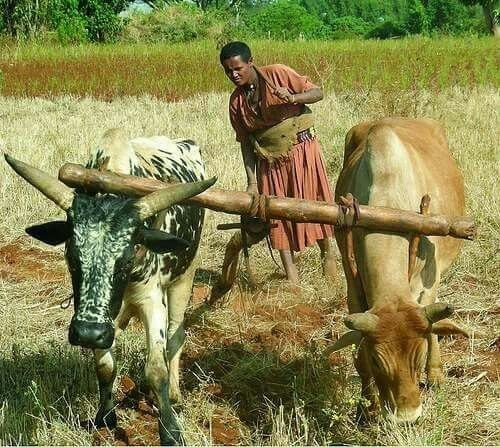#ploughing
Text
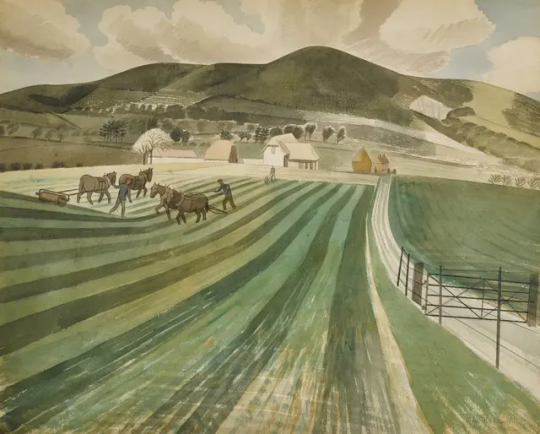
Eric Ravilious (British, 1903-1942), Mount Caburn, 1935. Watercolour and pencil on paper, 18½ x 23¼ in.
140 notes
·
View notes
Text
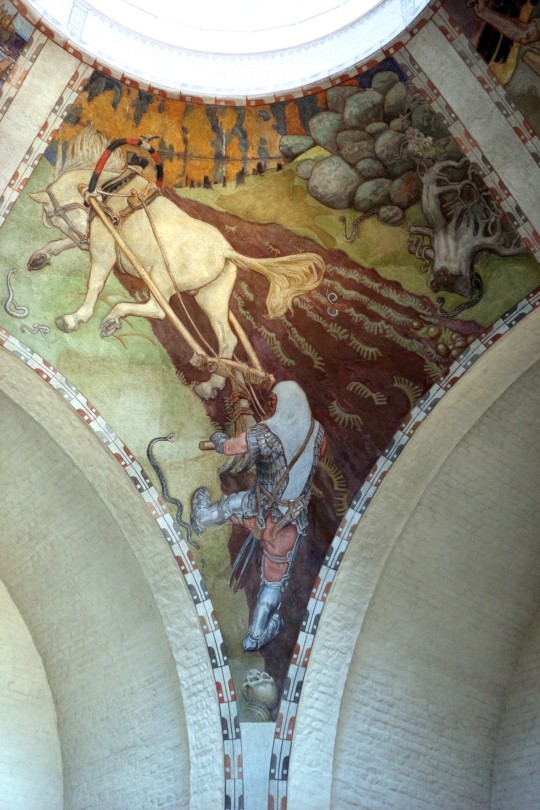
Ilmarinen ploughing the Viper-field (1928) by Akseli Gallen-Kallela (1865-1931), is one of the Kalevala frescoes in the National Museum of Finland.
(Picture source for image)
#art#art history#horses#horse#horse art#akseli gallen kallela#akseli Gallen-Kallela#frescoes#ploughing#1900s art#18th century art#1920s art#national museum of Finland#finland#kalevala#finnish art#finnish artist#finnish
82 notes
·
View notes
Text
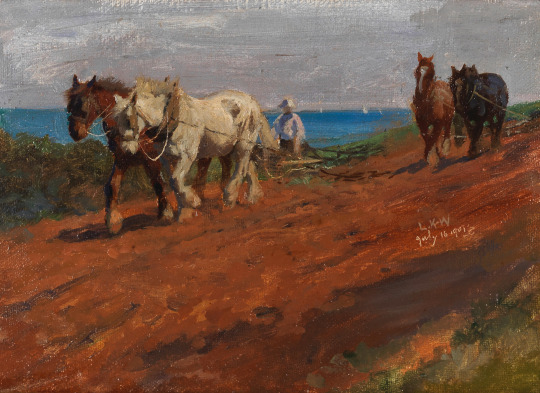
Lucy Kemp-Welch (1869-1958)- Ploughing
Oil on canvasboard. Painted in 1901.
9.1 x 12.4 inches, 23 x 31.5 cm. Estimate: £2,000-3,000.
Sold Bonhams, London, 13 March 2024 for £5,760 incl B.P.
29 notes
·
View notes
Text

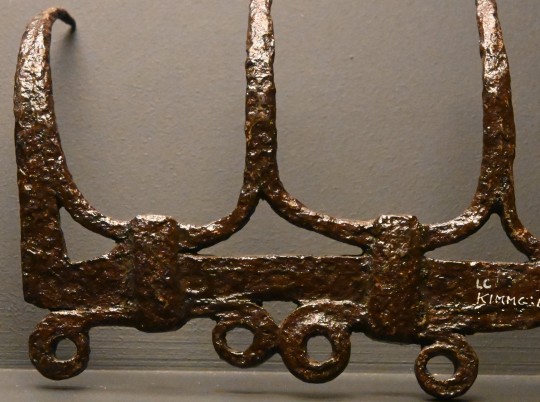
Part of an Iron Age Hook, The Dick Institute, Kilmarnock, Scotland
#plough#ploughing#iron age#iron age tools#ard#archaeology#relic#ancient craft#ancient design#farming#metalwork#metalworking#Scotland#farmers#Kilmarnock
67 notes
·
View notes
Text

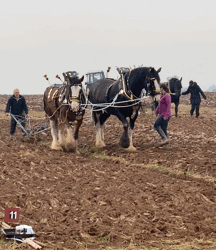
The local ploughing match. I wasn’t able to speak to the drivers directly, but this horse team was fantastic! There were quite a few horse teams this year, although apparently this particular horse team does up to 20 ploughing matches a year! Given that ploughing season is a period of around six weeks, that’s a serious achievement. Later on during the match, a two-horse team may turn into a one-horse team as the ploughing furrows are required to be ‘slivers’, which is measured as the width a pheasant can run down! Using a single horse means you keep the definition of the furrow.
#farmcore#farming#farmlife#farm animals#farmland#british farming#animals#horseblr#shire horse#heritage#ploughing#history
21 notes
·
View notes
Photo
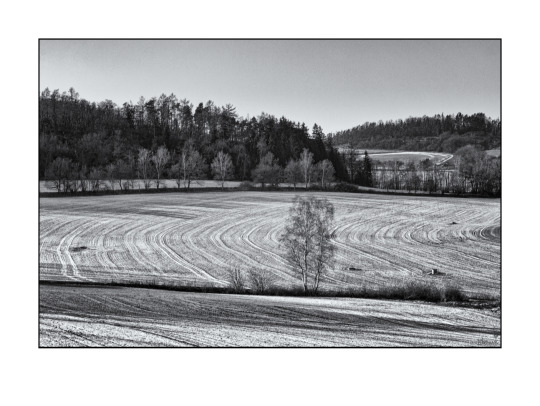
#photographers on tumblr#original photographers#black and white#landscape#fields#lines#ploughing#snow#trees#forest#distant view#rural#hostovnice
6 notes
·
View notes
Text

Höstplöjning på maden (English title: Autumn Ploughing in the Marshland ) painted in 1911 by Ester Almqvist (1869 – 1934). Oil on canvas.
Almqvist was a pioneer of expressionist painting in Sweden.
(Source for Höstplöjning på maden)
#ester Almqvist#art#art history#ploughing#expressionism#swedish art#swedish artist#rural#1900s art#20th century art
2 notes
·
View notes
Text
The Essential Role of the Plough in Agriculture

The plough is a very important equipment in farming. Farmers use it to get the soil ready for planting seeds. The plough has a strong blade that goes into the ground. It turns the soil over and breaks it into smaller pieces. This helps make the soil better for plants by giving them more space to grow their roots and get nutrients.
0 notes
Photo
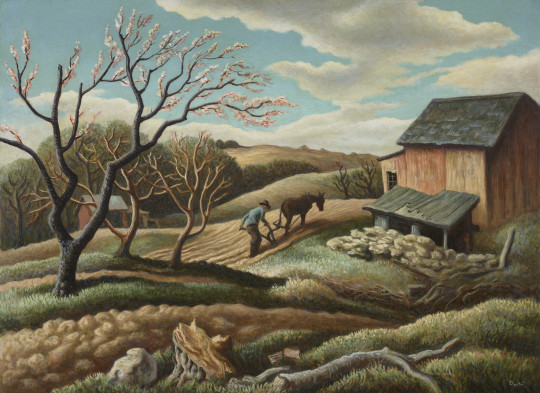
Thomas Hart Benton (American, 1889-1975), Spring Ploughing, c.1940. Oil on canvas, 22 3/8 x 30 1/4 in.
183 notes
·
View notes
Text

Theodor Philipsen, Evening Landscape, 1912, Statens Museum for Kunst, open.smk.dk, public domain.
(Picture source for Evening Landscape)
#Theodor philipsen#Theodor Esbern Philipsen#danish art#danish painting#Danish painter#1900s art#20th century art#horses#art#art history#horse#horse art#evening#ploughing#agriculture#farming#working horse
16 notes
·
View notes
Text

Arnold Wilhelm Moeller (1886-1963) - Herbstpflügen
Oil on cardboard. Painted in 1945.
9.6 x 12.2 inches, 24.5 x 31 cm. Estimate: €1,200-1,500.
Failed to sell Neumeister, Munich, 21 Sept 2023.
33 notes
·
View notes
Text
A plough is a farm tool used to get the soil ready for planting seeds or crops. It loosens the soil and turns it over. It's typically made up of a blade, known as a ploughshare, attached to a frame or handle. When pulled or pushed through the soil, the plough digs deep furrows, allowing for better aeration and drainage.
Ploughs have been used for centuries and are essential for preparing fields for planting. For more information about cultivator, visit us at: https://shorturl.at/hnzUX
#plough#reversible plough#plough meaning#mould board plough#ploughing#plow#agriculture equipment#agriculture machinery
0 notes
Text
In other words, grazing land is good for methane reduction. Cropping land isn't, unless it's no-till: research has estimated that no-till agriculture can help break down methane up to 11 times faster than ploughed land.
"Soil: The incredible story of what keeps the earth, and us, healthy" - Matthew Evans
0 notes
Text
But just how much damage is just becoming clear.
"Soil: The incredible story of what keeps the earth, and us, healthy" - Matthew Evans
0 notes
Photo

Das Hacken der Zuckerrüben mittels [...]
Objektbezeichnung: Fotografie
Sammlung: Fotografie und neue Medien
Inventarnummer: P1994.1279
Herstellung: Vielleicht von Johann Hinrich W. Hamann (1859–1935, Fotograf/in) GND
Vielleicht von Heinrich Hamann (1883–1975, Fotograf/in)
Atelier J. Hamann (Fotograf/in)
um 1900
Signatur/Marke: Trockenstempel: recto u. re.: "J. HAMANN / HAMBURG"
Stempel: verso u.: "J. Hamann / Hamburg 1 / Neustädterstr. / 66/68 / Atelier für Photographie aller Art / Prämiiert Hamburg 1899"
betitelt: verso: handschriftlich in Blei: "Das Hacken der Zuckerrüben / mittels [...]"
Museum für Kunst und Gewerbe Hamburg
#pferd#working horse#ploughing#draught horse#draft horse#Atelier J. Hamann#Hamburg#museum für kunst und gewerbe
5 notes
·
View notes

